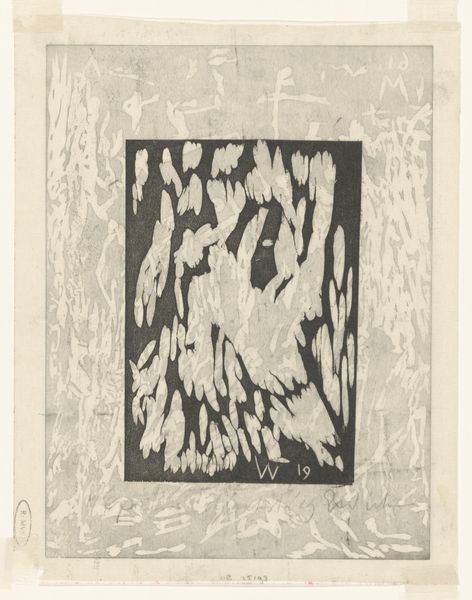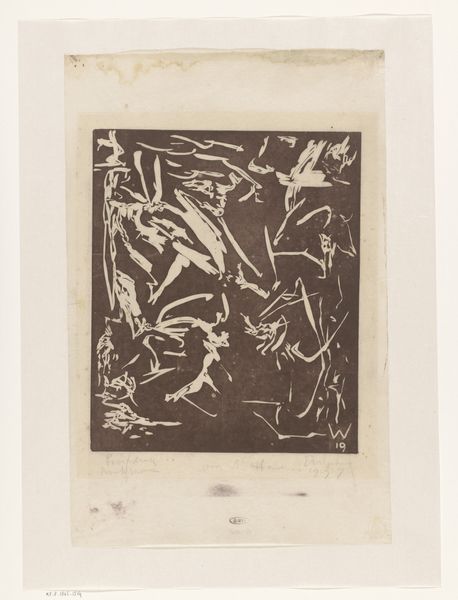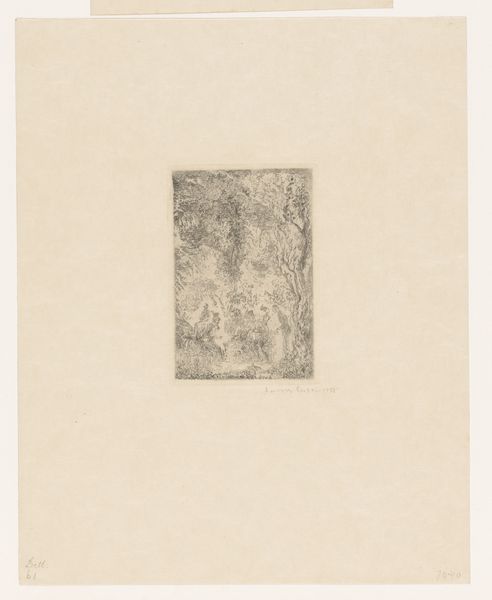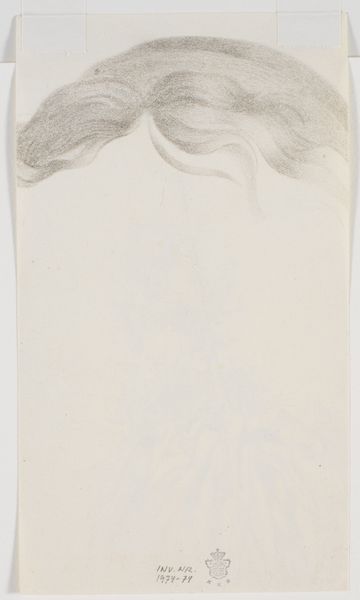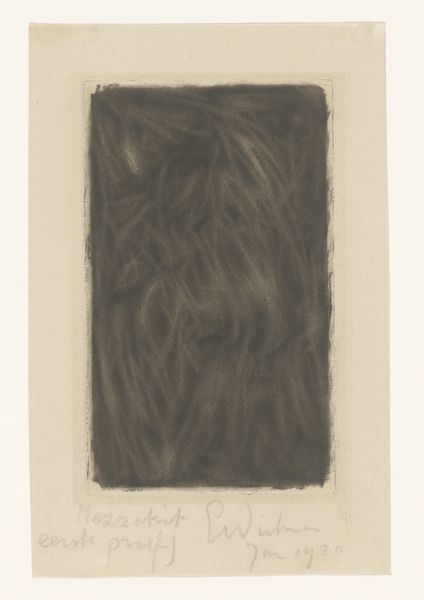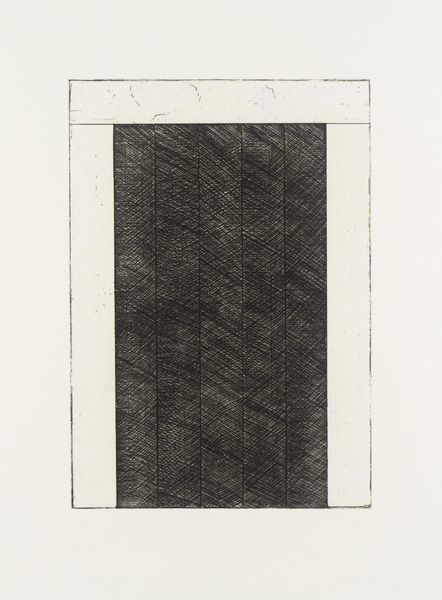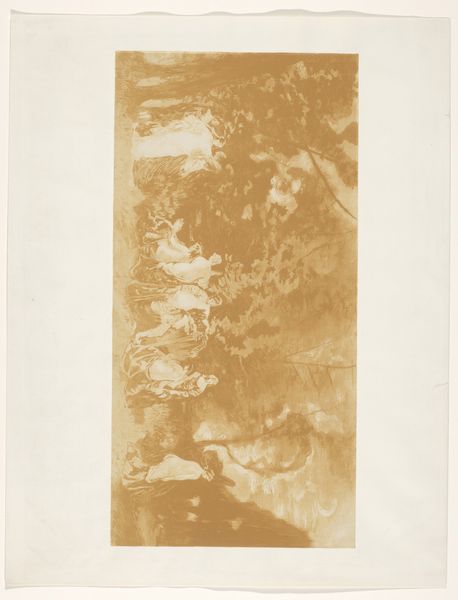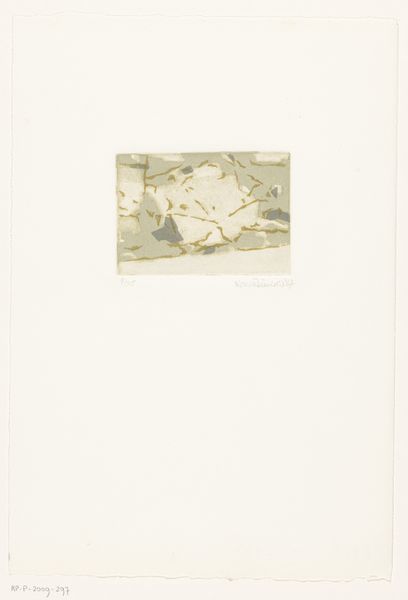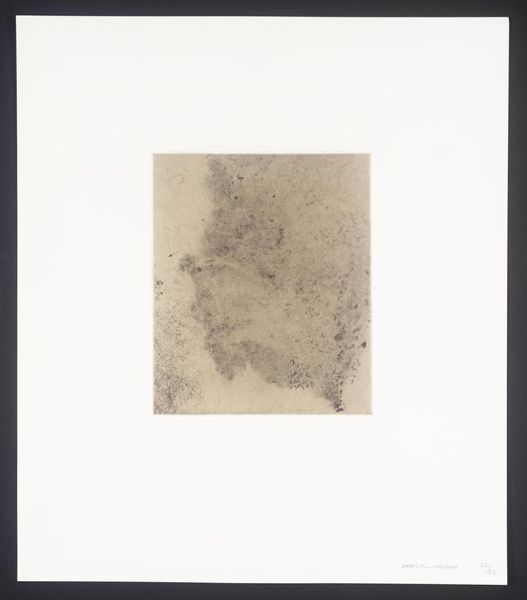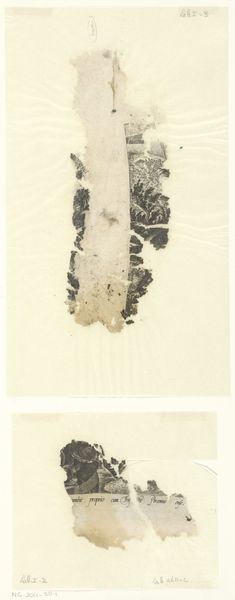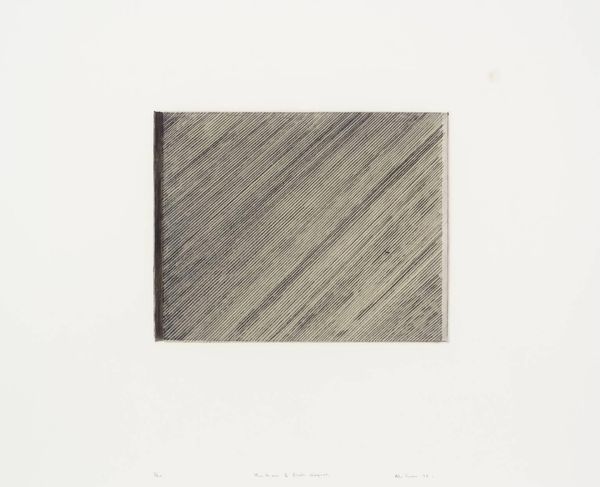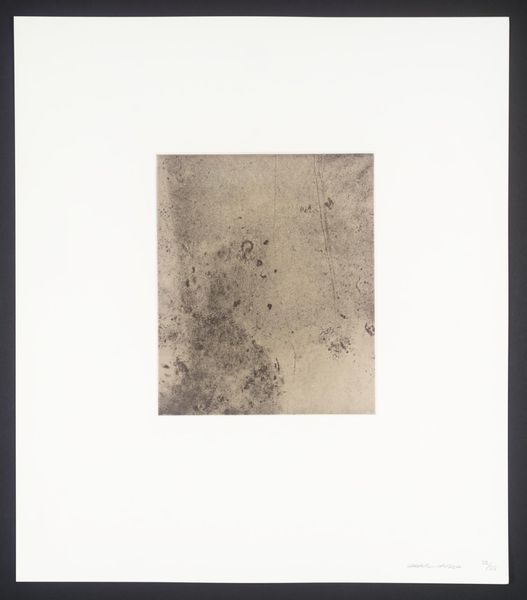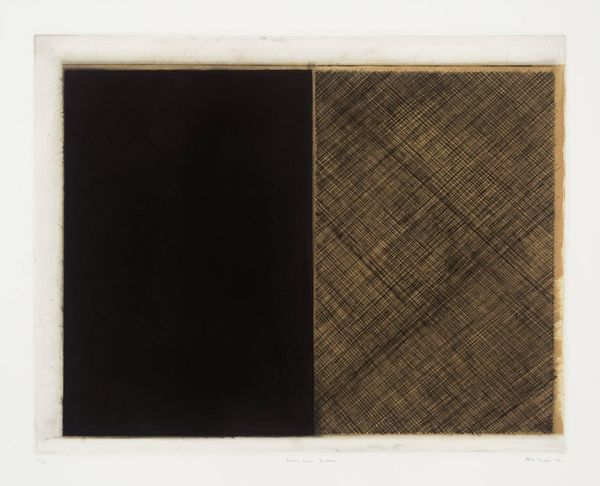
drawing, graphite
#
drawing
#
abstraction
#
graphite
#
modernism
Dimensions: height 134 mm, width 97 mm
Copyright: Rijks Museum: Open Domain
Curator: Erich Wichmann’s "Abstracte compositie," created between 1920 and 1921, invites a moment of reflection. The piece employs graphite on paper, typical of his modernist leanings during this period. Editor: It gives me the impression of controlled chaos—an oxymoron, perhaps. But I see a tension between the intentional mark-making and an overall effect of something organic, even turbulent. The lines are suggestive of movement and unrest. Curator: Looking closely at Wichmann’s technique, the repetitive marks build upon each other. Graphite allows for this accumulation and layering, becoming almost tactile in its density. Editor: This density also has an interesting resonance when thinking about post-war art production. Is it a commentary on the frenetic, dehumanizing production processes of the early 20th century? Is this art commenting on its own method? Curator: It raises questions about the role of the artist as a creator versus a producer. Wichmann could be acknowledging the changing dynamic between manual skill and mechanical influence. This echoes wider debates within the modernist movement. How much craft defines a artwork's value, and who benefits? Editor: I see in this abstraction the turmoil and anxiety present during the interwar years in Europe. This could be seen as a visual metaphor for a society trying to rebuild and redefine itself after a global catastrophe. It feels both deeply personal and historically significant. Curator: Absolutely. There’s also something quite intimate about the medium of graphite on paper, which can often be a readily available and comparatively low-cost method for producing artwork. Was Wichmann making this to protest fine-art material requirements? Editor: It invites consideration of modernism beyond aesthetics, connecting it to social movements and critical questioning of economic structures of power. Wichmann’s work stands not just as an artwork, but a silent commentary of it's time. Curator: Studying this small abstract drawing offers so much when we bring into the conversation ideas surrounding material culture and the value we attach to different methods of art production. Editor: Yes, it serves as a potent reminder that even abstract forms can carry deep political, social, and emotional weight, resonating across generations.
Comments
No comments
Be the first to comment and join the conversation on the ultimate creative platform.
